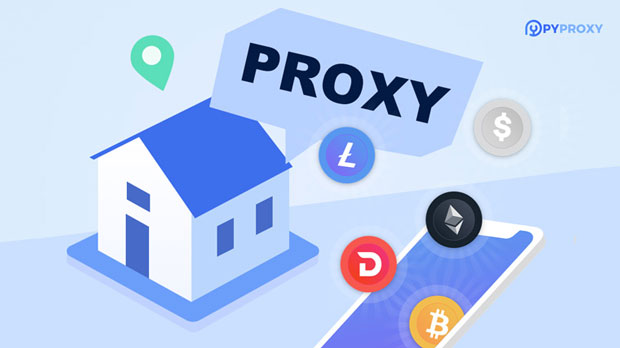In automation scripts, proxies play a crucial role in improving performance, maintaining anonymity, and bypassing regional restrictions. Among the most widely used proxy protocols are HTTP and SOCKS5. Although both protocols serve similar purposes, their performance and functionality can vary significantly depending on the type of automation task at hand. HTTP proxies are typically faster and easier to implement, but they have limitations, especially when dealing with non-HTTP traffic or complex routing. sock s5 proxies, on the other hand, offer more flexibility and support a wider range of internet protocols, making them better suited for certain automation applications, such as those involving P2P or gaming. Understanding these differences is essential for selecting the right proxy for an automation script, ensuring both efficiency and security. 1. Overview of HTTP and SOCKS5 ProtocolsHTTP and SOCKS5 are both types of proxies that act as intermediaries between a client and a server. An HTTP proxy specifically handles HTTP and HTTPS traffic, meaning it is optimized for browsing web pages and making HTTP requests. It operates by forwarding HTTP requests from a client to the server, then returning the server's response to the client.On the other hand, SOCKS5 is a more versatile proxy protocol that supports a broader range of traffic types, such as TCP, UDP, and even protocols other than HTTP. SOCKS5 is often favored when the automation task requires flexibility or if the application is not limited to standard web browsing.2. Performance Differences in Automation TasksWhen it comes to performance, the primary difference between HTTP and SOCKS5 is in their protocol handling and supported features. HTTP proxies are highly optimized for speed, especially for web traffic. They are typically faster when it comes to routing HTTP requests and returning responses, making them ideal for tasks that are focused on HTTP-based communication, such as scraping data from websites or making API requests.However, HTTP proxies often have limitations. Since they are designed specifically for HTTP/HTTPS traffic, they might not work efficiently with non-HTTP applications, such as FTP or P2P file sharing. Additionally, HTTP proxies may have issues with handling complex web traffic, such as JavaScript-heavy websites or sites that use non-standard methods of data transmission. For more complex automation scripts, these limitations can lead to slowdowns or failures in completing the task.SOCKS5, in contrast, excels in situations where flexibility and support for multiple protocols are necessary. SOCKS5 is not limited to HTTP traffic and can handle a wider variety of network protocols, making it more suitable for complex automation tasks. For example, in tasks like automated testing of network connections, downloading files using FTP, or running scripts for applications that require UDP traffic, SOCKS5 is the more robust choice.3. Security and Privacy ConsiderationsWhen considering security and privacy, both HTTP and SOCKS5 proxies provide a layer of protection by hiding the user's real IP address. However, the way they implement security differs.HTTP proxies typically support simple authentication mechanisms to prevent unauthorized access. While they do provide some degree of anonymity, they are more vulnerable to detection, as the protocol is easier to trace. Furthermore, HTTP proxies generally do not support encryption, which means any data transmitted through the proxy could potentially be intercepted by malicious actors.SOCKS5 proxies, on the other hand, offer better security features. Many SOCKS5 proxies support username and password authentication, which adds an extra layer of protection. Moreover, SOCKS5 can handle encrypted traffic, making it a better choice for tasks that require secure transmission, such as accessing private data or dealing with sensitive information. This added security makes SOCKS5 a preferred choice in automation scripts that involve handling confidential data.4. Compatibility with Automation ScriptsOne of the most critical aspects of selecting between HTTP and SOCKS5 proxies for automation scripts is compatibility. HTTP proxies are generally easier to implement and are compatible with most web scraping tools and applications designed for HTTP traffic. Many popular libraries for automation, such as Selenium or Puppeteer, are designed to work with HTTP proxies, making them ideal for simple web scraping or automating browser actions.However, when it comes to more complex automation scripts, such as those involving torrenting, gaming applications, or VPN services, SOCKS5 proxies are the better choice. SOCKS5 supports a wider range of protocols and is more versatile in handling diverse traffic types. This makes it the preferred option for tasks that require more than just HTTP traffic, such as applications that use UDP or other network protocols.5. Application Use Cases and Ideal ScenariosBoth HTTP and SOCKS5 proxies are suitable for different types of automation tasks. Below are some ideal scenarios where each type of proxy shines:- HTTP Proxy Use Cases: - Web scraping tasks that primarily deal with HTTP requests and responses. - API requests that do not involve any non-HTTP protocols. - Automated browser actions, such as login automation or form submissions, for web applications.- socks5 proxy Use Cases: - Automation tasks that involve protocols beyond HTTP, such as FTP, P2P file sharing, or gaming. - Situations requiring enhanced privacy and security, especially when dealing with encrypted traffic. - Network testing, where various protocols like UDP are required for a more thorough analysis.6. Conclusion: Choosing the Right Proxy for AutomationIn conclusion, the decision between HTTP and SOCKS5 proxies largely depends on the nature of the automation task at hand. HTTP proxies offer excellent performance for standard HTTP and HTTPS traffic, making them ideal for simple web scraping and automated web browsing tasks. However, they come with limitations when handling non-HTTP traffic or complex applications.SOCKS5 proxies, on the other hand, provide greater flexibility and are better suited for more complex automation tasks, particularly those involving multiple protocols or the need for enhanced security and privacy. By understanding the differences between these two proxy types and their respective strengths, you can make an informed decision on which one to use for your automation scripts, ensuring optimal performance, security, and efficiency.
Jun 26, 2025






















































